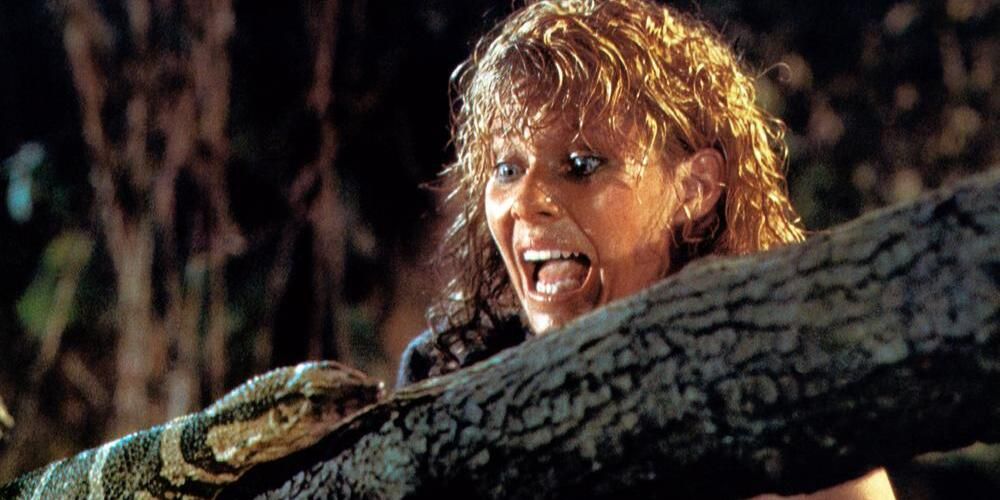Indiana Jones and the Temple of Doom was widely regarded as another instant classic when it was released in the summer of 1984: one of a long line of guaranteed blockbusters from the team of George Lucas and Steven Spielberg. Despite its swift success, however, a backlash was equally swift. Critics noted its darker tone and surprisingly brutal violence, and a host of other issues only grew more prominent as the years went on. Despite its technical achievements and another winning performance from Harrison Ford in the title role, the movie is now more known for its controversies and problematic content than any of its better qualities.
That combined to make it the most troublesome of the four Indiana Jones movies released so far. The others came with controversies of their own -- some of which overlapped with Temple of Doom's -- but none were quite so pervasive and inescapable as its. Spielberg himself has publicly disowned the picture, leaving it a redhead stepchild in his canon. Its controversies can be roughly divided into two categories, along with a third -- far more minor -- that remained an issue at the time as well.
The Temple of Doom's Racism Was Systemic
The Temple of Doom's racism is overarching and systemic: all but impossible to separate from the whole. It starts with the opening scene in Shanghai, depicted as a haven of corrupt gangsters and simplistic peasants. Jones haggles with a local crime lord over the ashes of a dead emperor in the midst of a modern nightclub -- just one sign of the film's staggering cultural appropriations -- and the ensuing chase through the streets involves such nasty clichés as a hapless rickshaw driver forced off the road into a street vendor's stall.
That doesn't improve when the action moves to India, and Jones travels to a haunted palace in search of a sacred stone from a local village. The film's Hindu characters are alternately presented as superstitious simpletons or active fiends. Temple of Doom depicts a cult of Kali -- a monstrous distortion of traditional Hindu figures -- dedicated to human sacrifice and global domination, engaging in barbaric rituals in the catacombs beneath the palace. Besides the film's infamous heart-ripping scene, it includes a "gross-out" feast depicting Hindi characters eating fried insects and monkeys' brains. Jones' status as white savior is the final touch in an effort that has aged shockingly poorly, while most of the other characters in the film -- including the central ones -- fall into some manner of stereotype.
Ironically, two of the movie's best performances are wrapped up in the problematic content, even as the actors rise above it. Ke Huy Quan's Short Round was an effortlessly charming addition to Indy's world: avoiding the smarminess of so many child characters and acting as a peer far more than a sidekick. And actor Amrish Puri, who played Mola Ram, went on to become one of Bollywood's greatest villains in his native India: a fact that he attributed to the success of Temple of Doom. Both performers deserved content less rife with issues, but neither let it diminish their work onscreen.
Temple of Doom's Violence Proved Too Much for Family Audiences
From the beginning, Temple of Doom was plagued by accusations of excessive violence. Spielberg was riding a reputation for family fare after the phenomenal success of 1982's E.T. The content here served as a sudden wake-up call by attempting to outdo the famous face-melting scene at the climax of Raiders. That included Temple of Doom's signature moment, as Mola Ram ripped the beating heart out of a human sacrifice's chest before lowering the man into a pool of lava. Other examples include skewering a Shanghai gangster on a flaming kabob, feeding a Thugee overseer into a mechanical rock crusher, forcing blood from a mummified skull down Jones' throat, and the sight of Mola Ram colliding against the sides of a cliff as he plummets to waiting crocodiles at Temple of Doom's conclusion.
But all of that paled before what critics at the time viewed as an even bigger problem. The film's army of slave children were tortured and beaten by the villains, as was Short Round. Along with Joe Dante's Gremlins -- released the same year and which contained similar instances of over-the-top violence -- it prompted the MPAA to create the PG-13 rating almost overnight. To his credit, Spielberg himself suggested the addition to the rating system, according to a 2017 article from The Hollywood Reporter. Regardless, the intense violence was seen as a bait-and-switch for family-friendly audiences, particularly as directed toward the under-aged characters.
Temple of Doom's Kate Capshaw Was Not the Star She Was Intended As
Though it pales before Temple of Doom's more serious problems, a milder controversy brewed around actor Kate Capshaw, who played the female lead, Willie Scott. She was billed as comedic relief, but her character came across as a screaming, weepy mess in sharp contrast to Karen Allen's far more capable heroine in Raiders of the Lost Ark.
She proved an active detriment to the plot, which was all the more painful because Spielberg doted upon her. The director was involved in an on-again-off-again relationship with his first wife Amy Irving at the time and has cited his romantic difficulties as a source of the movie's darker tone. They eventually divorced, and Spielberg married Capshaw in 1991. They remain together to this day, so their romance lasted, but Temple of Doom suffered terribly as a result. To add insult to injury, Kathleen Turner portrayed a very similar city-mouse-in-the-jungle heroine just a few months earlier in Robert Zemeckis' Romancing the Stone, and she proved far more funny and winning with the idea than Capshaw did in Temple of Doom.



.jpg)

